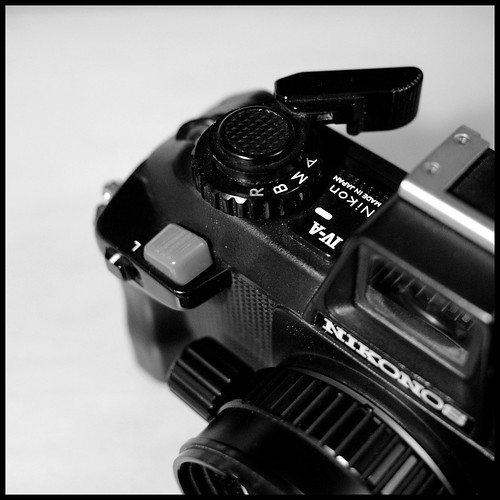Difference between revisions of "Nikonos IV-A"
(adding view of IV-A badging & shutter mode dial) |
(Commented out image no longer available) |
||
| Line 1: | Line 1: | ||
{{stub}} | {{stub}} | ||
| + | <!-- | ||
{{Flickr_image | {{Flickr_image | ||
|image_source= http://www.flickr.com/photos/phollectormo/5286139415/in/pool-camerawiki | |image_source= http://www.flickr.com/photos/phollectormo/5286139415/in/pool-camerawiki | ||
| Line 6: | Line 7: | ||
|image_text= | |image_text= | ||
|image_by= phollectormo | |image_by= phollectormo | ||
| + | |image_rights= wp | ||
| + | }}--> | ||
| + | {{Flickr_image | ||
| + | |image_source= http://www.flickr.com/photos/shojikimura/5187560776/in/pool-camerawiki | ||
| + | |image= http://farm5.static.flickr.com/4088/5187560776_31f080d2ef.jpg | ||
| + | |image_align= right | ||
| + | |image_text= | ||
| + | |image_by= Shoji Kimura | ||
|image_rights= wp | |image_rights= wp | ||
}} | }} | ||
| − | |||
While the [[Nikon#Underwater|earlier Nikonos series]] of underwater cameras had been evolutionary refinements on the original French [[Calypso]], the 1980 '''Nikonos IV-A''' was a design originating entirely from [[Nikon]]. Where the models up through the [[Nikonos III]] had been entirely mechanical cameras, the IV-A added TTL light metering and aperture-priority autoexposure via an electronically-timed shutter. The only manual exposure option was a mechanically-timed speed of 1/90th second, or "B". | While the [[Nikon#Underwater|earlier Nikonos series]] of underwater cameras had been evolutionary refinements on the original French [[Calypso]], the 1980 '''Nikonos IV-A''' was a design originating entirely from [[Nikon]]. Where the models up through the [[Nikonos III]] had been entirely mechanical cameras, the IV-A added TTL light metering and aperture-priority autoexposure via an electronically-timed shutter. The only manual exposure option was a mechanically-timed speed of 1/90th second, or "B". | ||
| Line 14: | Line 22: | ||
The [[Nikonos V]] followed in 1984, offering manually-selected shutter speeds and TTL control of flash exposure, making the IV-A a comparatively less desirable model today. | The [[Nikonos V]] followed in 1984, offering manually-selected shutter speeds and TTL control of flash exposure, making the IV-A a comparatively less desirable model today. | ||
| + | |||
==Links== | ==Links== | ||
*[http://imaging.nikon.com/history/chronicle/history-nikonos/index.htm Evolution of Nikonos] from [http://www.nikon.com/index.htm Nikon.com] | *[http://imaging.nikon.com/history/chronicle/history-nikonos/index.htm Evolution of Nikonos] from [http://www.nikon.com/index.htm Nikon.com] | ||
| − | |||
| − | |||
| − | |||
| − | |||
| − | |||
| − | |||
| − | |||
| − | |||
| − | |||
| − | |||
{{br}} | {{br}} | ||
Revision as of 03:41, 19 December 2019

|
| image by Shoji Kimura (Image rights) |
While the earlier Nikonos series of underwater cameras had been evolutionary refinements on the original French Calypso, the 1980 Nikonos IV-A was a design originating entirely from Nikon. Where the models up through the Nikonos III had been entirely mechanical cameras, the IV-A added TTL light metering and aperture-priority autoexposure via an electronically-timed shutter. The only manual exposure option was a mechanically-timed speed of 1/90th second, or "B".
The camera body was also greatly redesigned, offering a more conventional shutter release and hinged back. The viewfinder included LED display of exposure and flash status.
The Nikonos V followed in 1984, offering manually-selected shutter speeds and TTL control of flash exposure, making the IV-A a comparatively less desirable model today.
Links